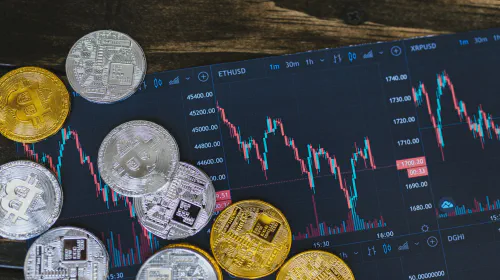Proof-of-History (PoH): Definition and Functionality Explained
Salomon Kisters
Aug 10, 2023This post may contain affiliate links. If you use these links to buy something we may earn a commission. Thanks!
In this blog post, we will explore the concept of Proof-of-History (PoH) and delve into how it works within the realm of blockchain technology.
PoH is a groundbreaking innovation that aims to improve the scalability and reliability of distributed systems, providing a unique solution to the synchronization problem that many blockchain networks face.
By the end of this post, you will have a clear understanding of PoH and its potential applications in various industries.
Introduction to Proof-of-History
Time is a crucial element in any decentralized system, and it plays a significant role in ensuring the integrity and accuracy of recorded transactions. Proof-of-History is a protocol that leverages the concept of time to establish a reliable ordering of events in a blockchain network.
Developed by the team at Solana, PoH provides a mechanism for nodes to reach consensus on the chronological order of transactions, mitigating the need for computationally expensive consensus algorithms like Proof-of-Work (PoW) or Proof-of-Stake (PoS).
The Basics of Proof-of-History
At its core, Proof-of-History combines a decentralized clock with cryptographic signatures to create a verifiable sequence of events. The decentralized clock, known as a “verifiable delay function” (VDF), generates a unique output for each moment in time. This output is then used as a timestamp for each transaction or event recorded on the blockchain. By relying on the verifiability of the VDF, nodes in the network can independently verify the order of events without relying on computationally expensive consensus algorithms.
Establishing Order and Validating Transactions
By incorporating Proof-of-History into a blockchain network, we can establish a linear order for each transaction. This linear order allows nodes to validate the sequence of events without needing to reach a consensus on the entire history of transactions each time a new block is added. Instead, nodes can rely on the timestamp provided by the VDF to determine the validity and order of transactions. This approach greatly improves the scalability of blockchain networks by reducing the computational overhead required for consensus.
Advantages of Proof-of-History
Enhancing Scalability
One of the main advantages of Proof-of-History is its ability to enhance the scalability of blockchain networks. By eliminating the need for computationally expensive consensus algorithms, PoH significantly reduces the time and resources required for transaction validation. This enables blockchain networks to process a higher volume of transactions per second, making them more suitable for real-world applications that demand fast and efficient processing.
Increased Reliability
Proof-of-History adds an additional layer of reliability to blockchain networks. By leveraging the verifiability of the VDF, nodes can independently verify the order of transactions without relying on a central authority. This decentralized approach enhances trust and eliminates the risks associated with a single point of failure. With PoH, the integrity of the blockchain is strengthened, making it more resistant to tampering or malicious attacks.
Simplified Consensus
By relying on the timestamp provided by the VDF, Proof-of-History simplifies the consensus process in blockchain networks. Nodes no longer need to agree on the entire history of transactions with each new block. Instead, they only need to validate the timestamp of the latest transaction. This greatly reduces the computational overhead and enables faster consensus, ultimately improving the overall efficiency of the network.
Potential Applications of Proof-of-History
The innovative nature of Proof-of-History opens up numerous possibilities for its application across various industries. Here are a few examples:
Supply Chain Management
In supply chains, maintaining an accurate and immutable record of transactions and events is crucial. With Proof-of-History, supply chain networks can enhance the transparency and traceability of goods by creating a verifiable and tamper-resistant timeline. Each transaction, such as the movement of goods or the completion of customs procedures, can be recorded with a timestamp, providing an auditable history that can be trusted by all stakeholders.
Financial Services
Proof-of-History can revolutionize the financial services industry by improving the speed and efficiency of cross-border transactions. By integrating PoH into a blockchain network, financial institutions can achieve near-instant settlement times, reducing the reliance on intermediaries and lowering transaction costs. Additionally, the verifiability of time-stamped transactions adds an extra layer of security and trust, making fraudulent activities more challenging to execute.
IoT Networks
Internet of Things (IoT) networks can benefit greatly from the implementation of Proof-of-History. With PoH, devices can securely record and verify events, creating a reliable timeline of data transmissions and interactions. This can be particularly valuable in applications where accurate timestamps are crucial, such as in energy grids, where the synchronization of data from various distributed sources is essential for efficient management and decision-making.
Conclusion
Proof-of-History is a game-changing protocol that harnesses the power of time to improve the scalability, reliability, and efficiency of blockchain networks.
By establishing a verifiable sequence of events, PoH eliminates the need for complex consensus algorithms, enhancing the overall performance of distributed systems. Its potential applications across industries such as supply chain management, financial services, and IoT networks highlight the versatility and value of this innovative concept.
As blockchain technology continues to evolve, Proof-of-History is undoubtedly paving the way for a more scalable and secure futu
Stay informed with the latest insights in Crypto, Blockchain, and Cyber-Security! Subscribe to our newsletter now to receive exclusive updates, expert analyses, and current developments directly to your inbox. Don't miss the opportunity to expand your knowledge and stay up-to-date.
Love what you're reading? Subscribe for top stories in Crypto, Blockchain, and Cyber-Security. Stay informed with exclusive updates.
Please note that the Content may have been generated with the Help of AI. The editorial content of OriginStamp AG does not constitute a recommendation for investment or purchase advice. In principle, an investment can also lead to a total loss. Therefore, please seek advice before making an investment decision.

How Many Solana Coins Are There and How Many Are Left?
Solana is a new player in the blockchain market. But how many Solana Coins are there, and how many are left?

Can Algorand Be Like Ethereum, and Does It Have a Future?
Today, we will be closely looking at how Agorand compares with Ethereum and whether this new, emerging cryptocurrency has a prosperous future or not.

Navigating the Ethical Terrain of Technology - Key Areas and Practical Approaches
Explore key areas where ethical considerations come into play when interacting with technology and discuss practical approaches to navigating this complex terrain.
Protect your documents
Your gateway to unforgeable data. Imprint the authenticity of your information with our blockchain timestamp